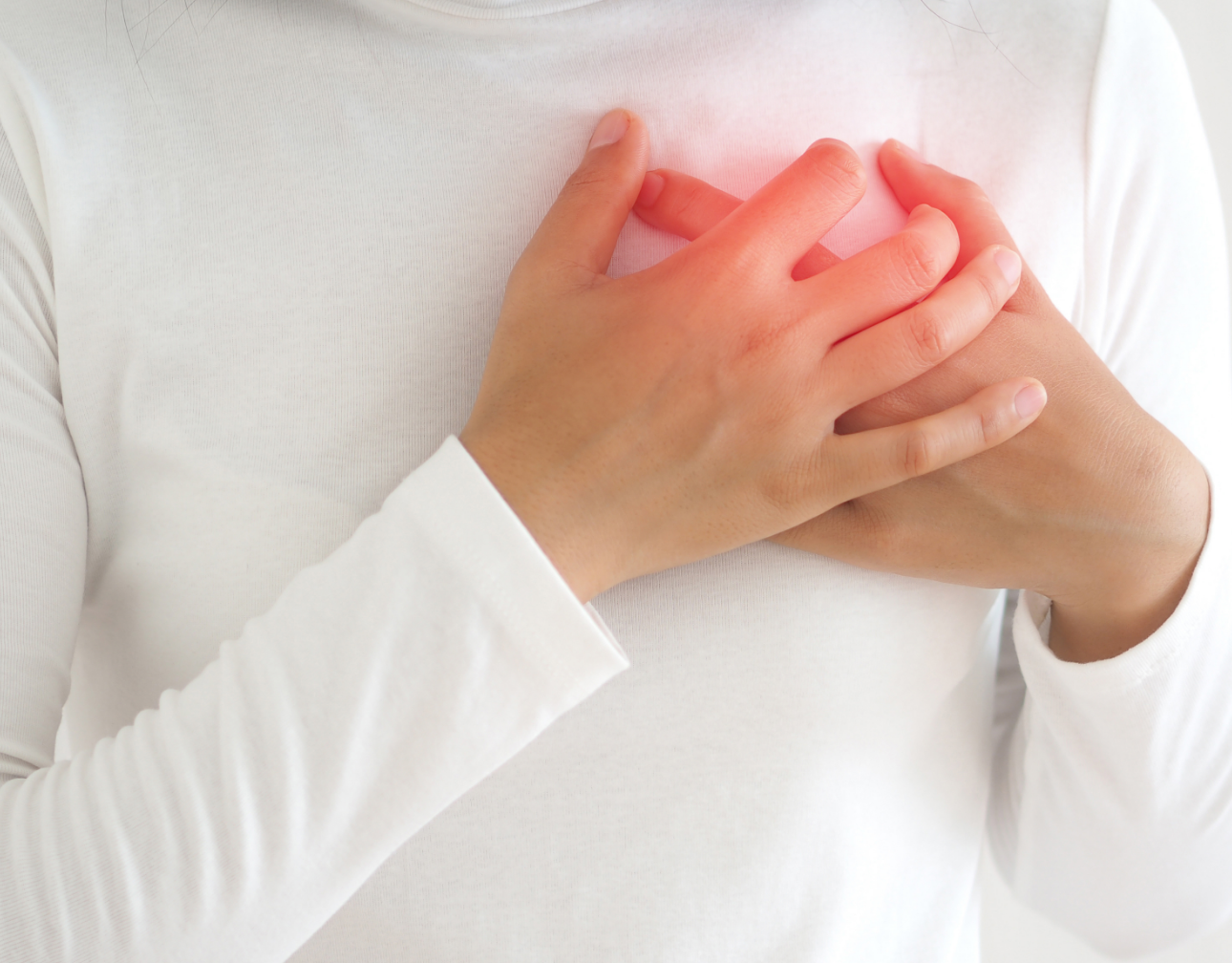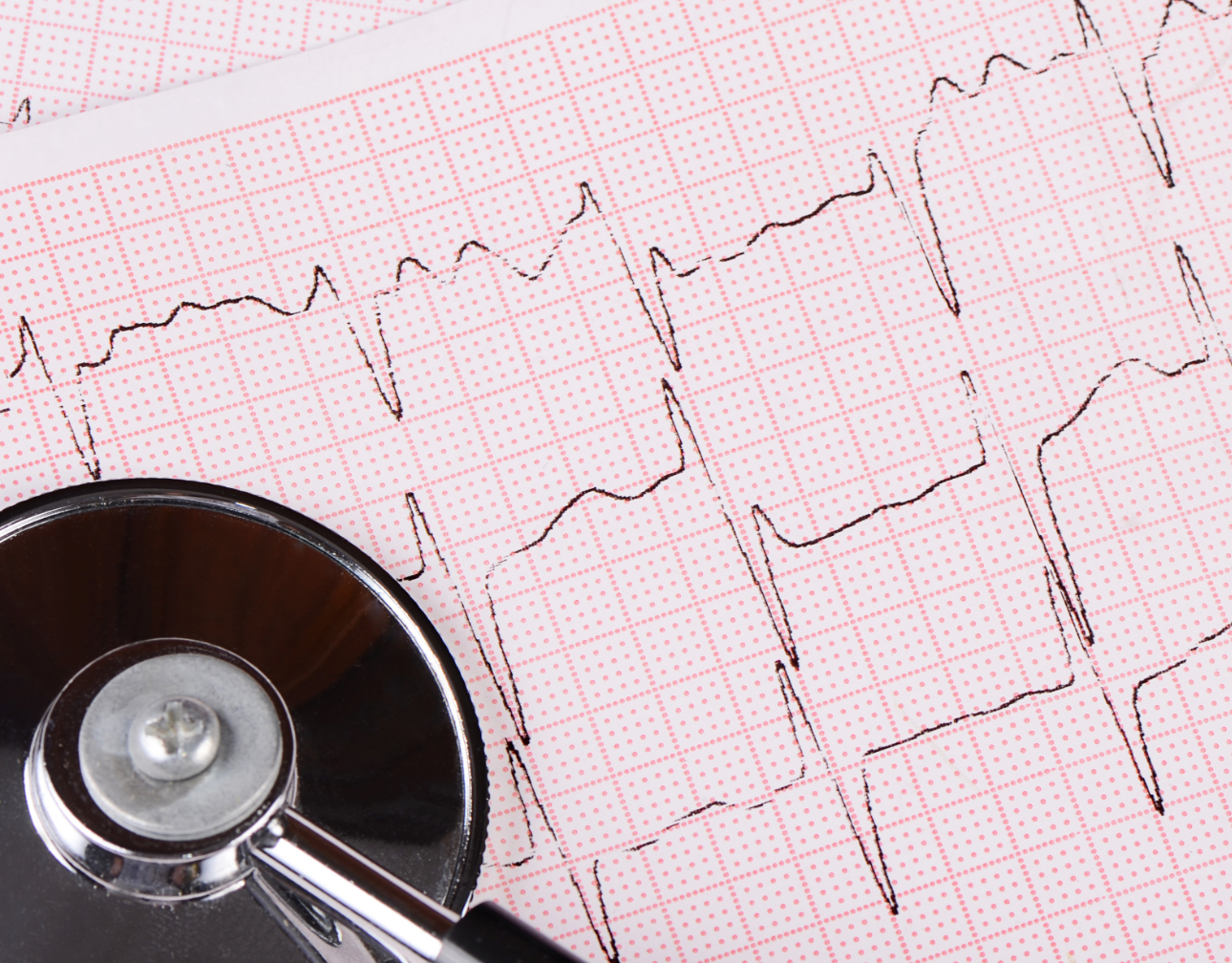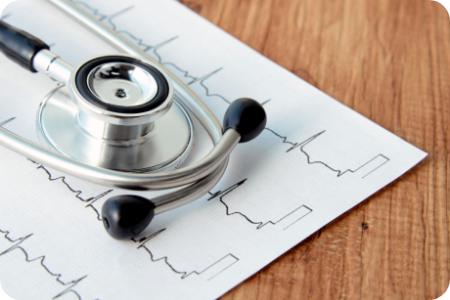Study
Learn About Arrhythmia
Maximum Danger! What is Atrial Fibrillation?

Atrial fibrillation is a type of arrhythmia caused by a disturbance in the electrical signals flowing in the atria, which makes the atria tremble finely as if in spasm and prevents blood from being pumped throughout the body properly.
A particular problem is the formation of a blood clot in the atria, which is carried by the bloodstream to the rest of the body and clogs blood vessels. (From atrial fibrillation.com)
80% of deaths from stroke!
It is estimated that about 45,000 deaths per year are caused by cardiogenic stroke,
which occurs when a blood clot created by atrial fibrillation is carried to the brain.
Compared to the number of cancer deaths per organ, it is second only to lung cancer as the largest cause.
(Ministry of Health, Labour and Welfare, 2020, Vital Statistics,
Cause of death "cerebral infarction", estimated from Ken Okumura et al, CLINICIAN 2007. 557: 343-353)
20% of bedridden patients!
Of all strokes (34.5%), the largest cause of bedridden patients is cardiogenic stroke.
In fact, two-thirds of all strokes and 20% of all bedridden patients are caused by atrial fibrillation.
(Estimated from "Status of Care" by the Ministry of Health, Labour and Welfare in 2013,
the website of the Japan Stroke Association, and Ken Okumura et al, CLINICIAN 2007. 557: 343-353)
Health checkups do not detect it early!
The annual physical examinations that everyone undergoes only detect chronic (always present) arrhythmia.
It is said that there are equal numbers of patients with paroxysmal (only occasionally present) and chronic atrial fibrillation in Japan, but the risk of stroke is said to be the same.
The kokoromil test also detects atrial fibrillation in young people.
However, since the incidence of atrial fibrillation increases with age, we recommend the kokoromil test, which is easy to perform at home, especially for people over 50 years old.
Not found in medical checkups! Dangerous Arrhythmia

According to statistics from the Ministry of Health, Labor and Welfare in 2020, the number of deaths caused by arrhythmia itself is estimated to be about 30,000.
In particular, arrhythmias such as atrial ventricular tachycardia and ventricular flutter are life-threatening and must be stopped immediately with external electrical stimulation using an AED or other means. Ventricular extrasystoles and ventricular tachycardia, which occur from the ventricular side, may be a hidden danger of serious heart disease, depending on their number of occurrence and duration.
Bradycardia (slow pulse) or pauses (the heart does not beat for several seconds) associated with atrioventricular block or sinus failure syndrome may not allow enough blood to flow to the brain, causing dizziness or fainting. In such cases, a pacemaker is often indicated.
This type of arrhythmia is often rare and difficult to detect with an EKG, which only measures about 15 seconds. 24 hours is not enough time to detect it. It is at least 5,000 times longer than that of a physical examination.
Arrhythmias can also be caused by other cardiovascular diseases, and if you get a C, we recommend a visit to a cardiology clinic with echocardiography capabilities.
How to Read Reports
Grade A
There were no arrhythmias of note during the examination period.
The judgment is only a confirmation of the part of the ECG that was well obtained during the examination period; a grade of A does not mean that there is no risk at all.
Grade B
Although there was an arrhythmia of concern during the examination period, the risk of an immediately dangerous condition is low.
If there are no subjective symptoms such as palpitations, dizziness, or chest pain, we recommend a repeat examination in one year for follow-up.
Grade C
During the examination period, an arrhythmia (atrial fibrillation/flutter, atrial tachycardia, degree III AV block, long pause, etc.) that should be considered for treatment is found, or the risk of other cardiovascular diseases is predicted.
Those found to have atrial fibrillation, in particular, should visit a cardiology clinic or general hospital as soon as possible, as some form of treatment, such as medical therapy or catheterization, is often required.
For those with other arrhythmias rated C, about 10% will require treatment. We recommend that you visit a clinic specializing in cardiology.
Related Articles

Warning: Undefined array key "small" in /home/soleda1101/soleda-jeo.com/public_html/sample3/wp-content/themes/kokoromil/template-parts/linkBlock.php on line 6

Warning: Undefined array key "small" in /home/soleda1101/soleda-jeo.com/public_html/sample3/wp-content/themes/kokoromil/template-parts/linkBlock.php on line 6





